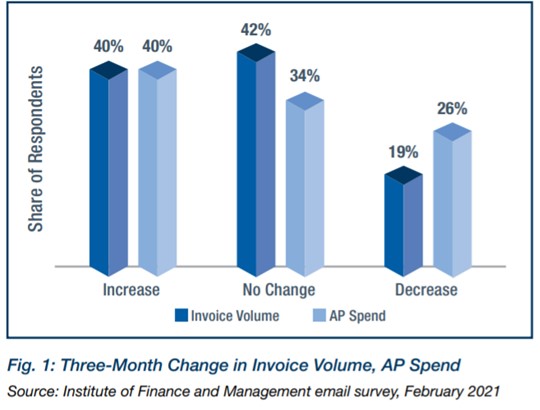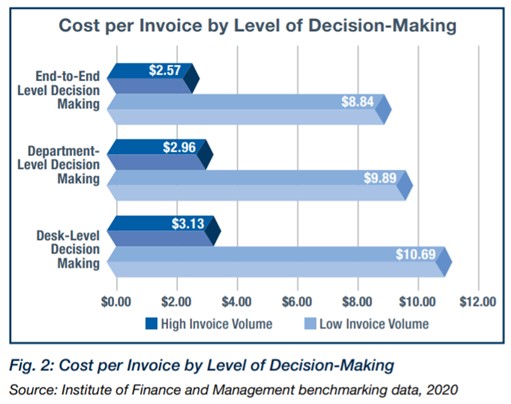- Blog
- Reshaping Accounts Payable: Embracing Digital AP Automation
Reshaping Accounts Payable: Embracing Digital AP Automation
The need to automate AP processes has never been more pressing. With many businesses having reduced staff to compensate for the economic downturn, the rebound we’re now seeing has created a predicament for those companies relying on manual processing. IOFM partnered with Basware to analyze the best strategy going forward for global firms now that volumes are picking up for many organizations.
Reimagine your workforce with a digital evolution
Uncertain times can accelerate the need to invest in Invoice Lifecycle Management platforms to gain complete control of every invoice, every time, across the entire lifecycle, all from one, integrated solution.
Whether you are at the beginning of your digital evolution journey or have already implemented a leading suite solution, digital accounts payable capabilities will be a critical element to the success of your overall digital strategy. The question is not whether, but when to invest in AP automation.
The time is NOW for AP Automation
In February 2021, a plurality of 50 AP leaders shared that invoice volume is rising again including one in five that report increases of 10 percent or more. Moreover, the average sise of invoices is also on the rise, suggesting this trend may just be beginning.

This increase means that AP departments are now confronted with a problem: They must staff up quickly or automate. Getting new staff up and running—which involves locating and hiring candidates, then training them—is not a quick or easy process in the normal course of business, and even harder with many managers still working from home.
Automation, on the other hand, readies the organization for the future, no matter what it may hold. While moving to AP automation the right way will require doing some homework on the front end, it’s a vastly better long-term solution.
What’s the cost of doing nothing when it comes to AP Automation?
Here is your revised section with accounts payable digital transformation naturally integrated while keeping the original meaning and structure intact:
As the economy begins to recover, companies may be tempted to assume the world will return to normal and their pre-pandemic processes will work in a post-pandemic world. However, many experts don’t feel that’s a real possibility. Organizations that fail to adjust to a post-pandemic world will find themselves short-staffed with an invoice backlog and a workforce that prefers to telework as opposed to being in an office environment.
This is where an accounts payable digital transformation becomes crucial - not just for adapting to remote work, but for building a more scalable, standardised, and efficient AP function moving forward.
Doing nothing also means reverting to desk-level decision-making. That means everybody on the AP team follows their own processes and priorities, deciding for themselves how to do their jobs - which invoices get paid first, how to match invoices to POs, how to route things for approval, etc.
The challenges desk-level processes presented in early 2020 will only worsen in 2021 with an increase in invoice volume. Aside from the significant process inefficiencies, this nonstandard approach results in lost discounts, slow-pay issues, and duplicate payments, which means real money is being wasted.

The goal: end-to-end automation
Automation extends beyond process efficiency and cost savings, however. It also provides:
Basware Insights transforms your AP data into real-time, actionable insights. Whether it's reducing invoice processing times or improving spend management, our flexible dashboards and AI capabilities empower you to achieve touchless invoice processing.
Supply chain risk mitigation. As we’ve recently seen, monitoring suppliers’ health and maintaining a roster of alternates can be a lifeline to business continuity in times of economic crisis.
Deep transparency into processes and compliance. That’s particularly significant in a world where brand reputation is increasingly at stake in terms of business ethics and sustainability practices.
Want to learn more?
Contact one of our Invoice Lifecycle Management experts!
Subscribe to the Basware Blog!
Related
-
By Olav MaasFrom Bottlenecks to Breakthroughs: Rethink PO Invoice Processing with AI
-
By Christopher BlakeHow To Fix Broken and Disconnected Invoice Processes with Invoice Lifecycle Management
-
By Jon StevensAP First, ERP Next: KION’s Smarter Path to SAP S/4HANA
-
By Adam LustigThe Integration Pyramid: Build It Right, Scale It Fast
-
By Jon StevensConnect the Dots Between AP and Your S/4HANA Migration
-
By Leigh CelonesProven Results With Basware’s InvoiceAI: Start Asking The Questions That Matter
-
By Leigh CelonesFrom Chaos to Clarity: Rethink Non-PO Invoice Handling with AI
-
By Leigh CelonesFrom AI to ROI: CFOs Reveal the Smartest AI Investments in AP
